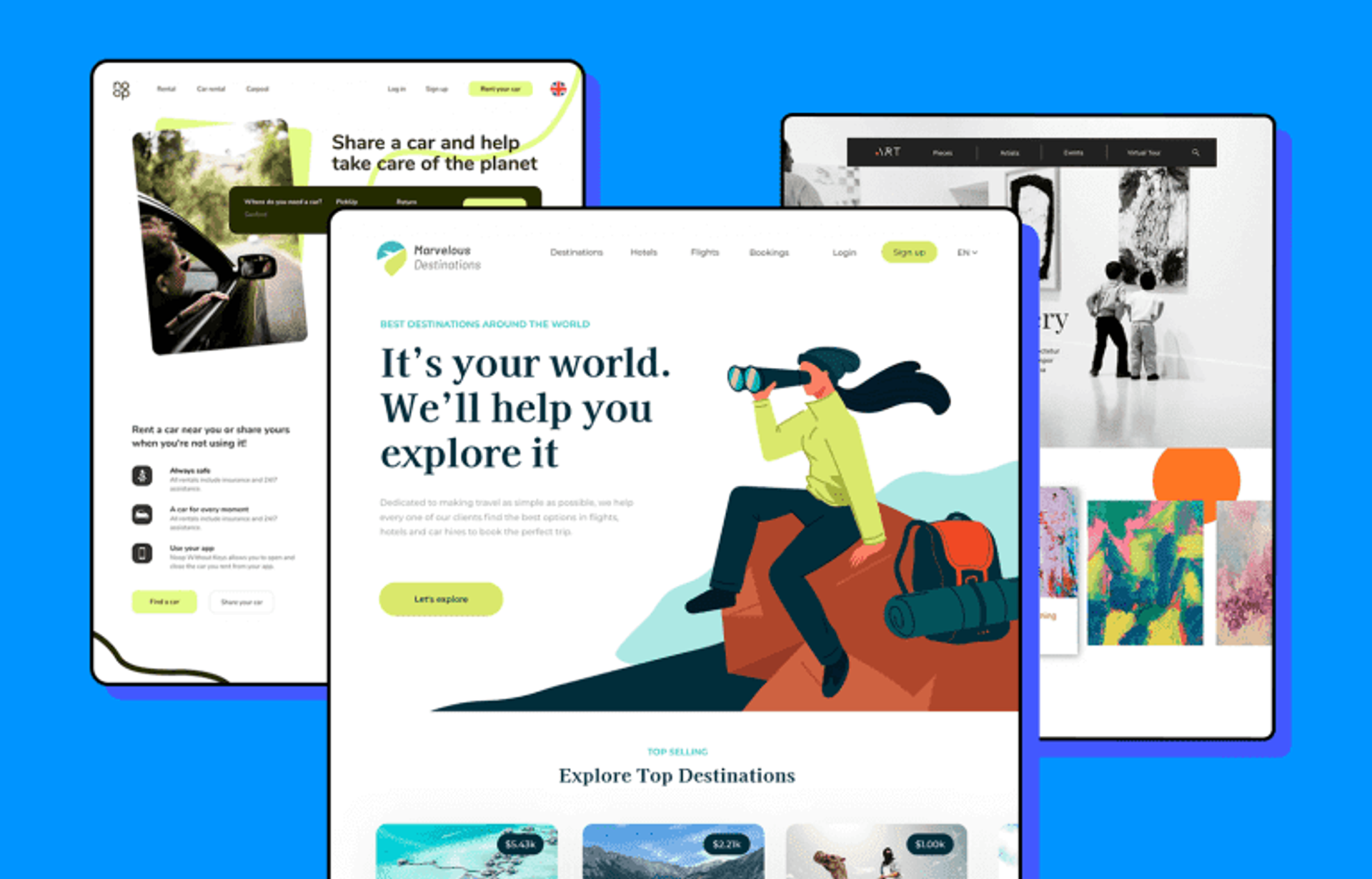Las Vegas SEO Firm Offering Innovative Strategies for Digital Success
Las Vegas SEO Firm Offering Innovative Strategies for Digital Success
Blog Article
Innovative Website Design Solutions for Modern and Engaging Sites
In the world of internet design, the quest of modern-day and interesting remedies has become significantly essential for organizations aiming to capture user attention. By incorporating vibrant shade systems, interactive aspects, and responsive layouts, developers can create experiences that not just resonate with users yet likewise improve brand name identification.
Embracing Bold Color Design
In website design, the strategic use of vibrant color design can dramatically improve user involvement and brand name identification. By using dynamic hues, developers can create visually striking web sites that record attention and foster an unforgettable experience. An appropriate shade scheme not just shows a company's worths but likewise stimulates particular emotions that can affect user actions.
Bold shades can be used to guide individuals' interest to crucial elements such as phone call to action, boosting conversion rates. For example, using contrasting shades for switches and web links can make these elements stand apart, triggering individuals to interact more easily. Furthermore, a natural color plan across the web site reinforces brand acknowledgment, producing a feeling of familiarity and count on among site visitors.
Nonetheless, it is vital to balance vibrant shades with adequate white area to avoid frustrating users. Effective usage of typography also enhances vibrant colors, making certain readability while keeping visual appeal. Ultimately, welcoming bold color design in website design not only elevates visual high quality however additionally plays an important function in attaining strategic organization purposes, making it a necessary factor to consider for modern-day internet advancement.

Utilizing Interactive Components
Interactive elements are crucial in modern-day web layout, as they significantly boost customer involvement and produce a more vibrant surfing experience. By integrating attributes such as animations, float effects, and clickable aspects, web sites can encourage users to check out material better and return for future check outs.

Micro-interactions, such as refined animations when a switch is clicked or a type is sent, can also boost the individual experience by giving prompt comments. These little information can make the internet site really feel more receptive and to life, promoting a sense of connection in between individuals and the site.
Furthermore, gamification aspects, such as rewards for finishing particular activities, can motivate users to involve with the web content more deeply. By thoughtfully integrating these interactive components, internet designers can create a memorable and interesting on the internet experience that reverberates with customers and encourages them to return.
Executing Responsive Layout
Carrying out responsive design is important in today's multi-device landscape, making sure that websites offer an optimal watching experience throughout different screen sizes. As individuals progressively access the web with smartphones, tablet computers, and desktop computers, a one-size-fits-all method is no more feasible. Responsive style enables seamless navigation and communication, adapting layout and web content to fit the device see post being utilized.
Key principles of receptive layout include fluid grids, adaptable pictures, and media questions. Liquid grids utilize loved one systems, such as portions, as opposed to taken care of pixels, enabling elements to resize proportionately. Flexible images range within their containing aspects, avoiding overflow and preserving aesthetic stability. Media questions assist in the application of different styles based on the tool's characteristics, such as size, height, or resolution, allowing developers to customize the user link experience efficiently.
Additionally, responsive style boosts SEO performance, as search engines favor mobile-friendly sites. By executing responsive layout, organizations not only enhance user fulfillment and engagement yet likewise increase their reach in an affordable digital landscape. As technology proceeds to progress, adopting receptive style has actually become an essential method for any type of contemporary and interesting site.
Incorporating Multimedia Web Content
Multimedia content plays a crucial role in producing engaging and dynamic internet experiences that catch users' attention and boost understanding. By more helpful hints incorporating message, photos, sound, and video, web sites can offer a richer story that interest numerous finding out styles and choices. This combination not just bolsters individual involvement yet additionally aids in conveying intricate ideas succinctly.
Including high-quality pictures and infographics can separate textual web content, making it more absorbable. In a similar way, video clip tutorials and discussions can offer comprehensive insights that static web content may not fully interact. Audio aspects, such as podcasts or background songs, can also improve the ambience of a website, producing an extra immersive experience.
Additionally, the strategic use multimedia can improve search engine optimization performance, as online search engine prefer diverse material kinds, raising presence. It is vital to make certain that multimedia components do not prevent web page load times, as this can lead to customer stress. By balancing multimedia assimilation with efficiency factors to consider, internet designers can produce visually attractive and functional sites that resonate with users, promoting a deeper link and encouraging return sees.
Focusing On User Experience

To accomplish an ideal customer experience, designers should focus on a number of crucial principles. Clear telephone calls to activity, understandable typography, and arranged material guide individuals, reducing cognitive lots.
Inevitably, focusing on UX not just raises user satisfaction but likewise drives interaction and conversion prices, making it a critical component of modern-day internet style approaches. By positioning individuals at the facility of design initiatives, websites can produce lasting, favorable impressions that encourage return visits.
Final Thought
Finally, modern-day internet layout options that stress strong color design, interactive elements, receptive style, and multimedia content dramatically boost user interaction and satisfaction. Focusing on individual experience via clear formats and continuous feedback even more contributes to improved conversion prices. By embracing these strategies, sites can properly mesmerize visitors and strengthen brand identification, eventually bring about a more vibrant and appealing on-line visibility. The integration of these style principles is necessary for accomplishing contemporary internet design purposes.
Report this page